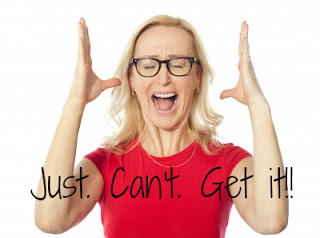This week I am thrilled to have Pearl from Resparkle as my first guest post. Enjoy!
Ok so perhaps you've embraced the organic lifestyle, an avid juicer or now a gym bunny, but do you still find yourself struggling with brain fog, sleeplessness or suffer from sensitive skin/sinuses? The culprit could be the quality of indoor air you breathe daily. Yes, indoor air is among the top 5 environmental risks to health according to numerous studies done in the US.
Common health problems that result from exposure to poor indoor air quality include: sensory and skin irritation; neurotoxic symptoms; hypersensitivity and odour and taste symptoms. Long term symptoms such as cancer and respiratory disease may be caused by long term, periodic exposure to chemicals.
While we do not have much direct control over the fumes & pollution we’re exposed to outdoors, we can take control in our homes. In this article, I share 4 easy ways to detox your home so it is a truly healthy sanctuary that you can retreat to after a long day.
(1) Rethink Artificial Air Fresheners/Deodorizers
I’m a scent junky so I totally get that you want your home smelling good but artificial air-fresheners are a toxic cocktail of volatile organic compounds (VOCs). VOCs can cause nausea, headaches and even cancer. Did you know that at the back label of many air-fresheners actually says “Inhaling contents can be harmful or fatal”?? Check out a photo taken from a randomly picked air freshener from Coles:
Instead, scent your home with essential oils. It might be more expensive for that tiny bottle but a little goes such a long way.
Here’s an easy way to keep your toilet smelling great:
(2) Ditch the chemicals starting with the nastiest
If you’re using chemical-based cleaners around your home, you are exposing yourself to unnecessary poisons. One of the most toxic offenders are bathroom or glass cleaners that often contain chlorine or ammonia. (Did you know mixing chlorine & ammonia was used as a weapon during WW1? Now why would you want that in your home?!)
Ditching chemical-based cleaners is perhaps the most impactful way you can adopt immediately.
A good resource when deciding on what cleaners to use is the EWG website (Environmental Working Group). It has a comprehensive list of cleaning products and rates them according to their impact on our health and environment.
http://www.ewg.org/guides/categories/3-Bathroom
So start switching to natural cleaning products and it is important to make sure the store bought ones are made of 100% natural ingredients. Many “green” brands that position themselves as “natural” often still contain nasty chemicals. You don’t want to be forking out a small fortune only to be still cleaning with toxic chemicals.
Resparkle’s range of organic cleaners are made from 100% natural plant based ingredients and the best part is it does not cost more than most chemical-based ones.
(3) Improve Indoor air & energy with plants
Studies conducted by NASA confirms that, the simplest way to purify and revitalize indoor air was to introduce plants in your home. They absorb toxic chemicals through their tiny openings in their leafs, filter them through their root system and the release pure oxygen into the air.
For example, the Boston fern can remove up to 1.8mg of formaldehyde per hour (a common cancer causing chemical found in furniture and particle board). The Boston fern is also a low pollen plant so if you’re sensitive to pollen, this is the plant to get!
Read more about how plants improve your health and what plants to get here.
http://resparkleaustralia.wordpress.com/2013/06/24/how-do-plants-improve-your-health-and-increase-the-flow-of-positive-energy/
(4) Detox your Garden: Don’t use pesticides: Use natural soap!
Yes, soap-based solutions have been used for centuries as all-purpose pesticides. They're nontoxic to the environment and to people — and they work on a wide variety of garden insects by disrupting their cell membranes and causing dehydration.
The key is not to use too much soap, or you'll also kill the vegetation near the pests. Mix 1 to 2 tablespoons liquid soap, such as Dr. Bronner's Pure-Castile Soap (do NOT use detergent) into 1 quart water in a bucket, then transfer to a spray bottle.
If you need to get rid of weeds, just pour hot water or vinegar at the roots. It will wilt and die in no time!
Pearl, founder of Resparkle – Australia’s first & only certified organic cleaning products that truly doesn't cost the earth. www.resparkle.com.au













